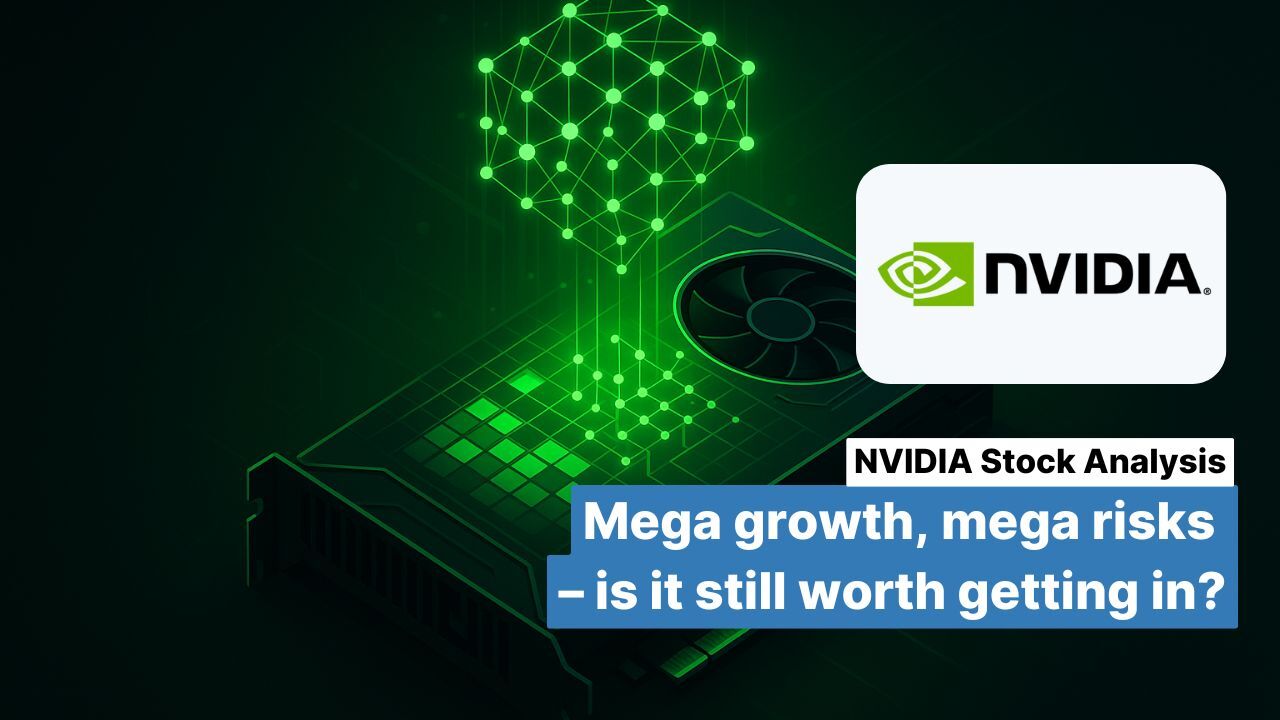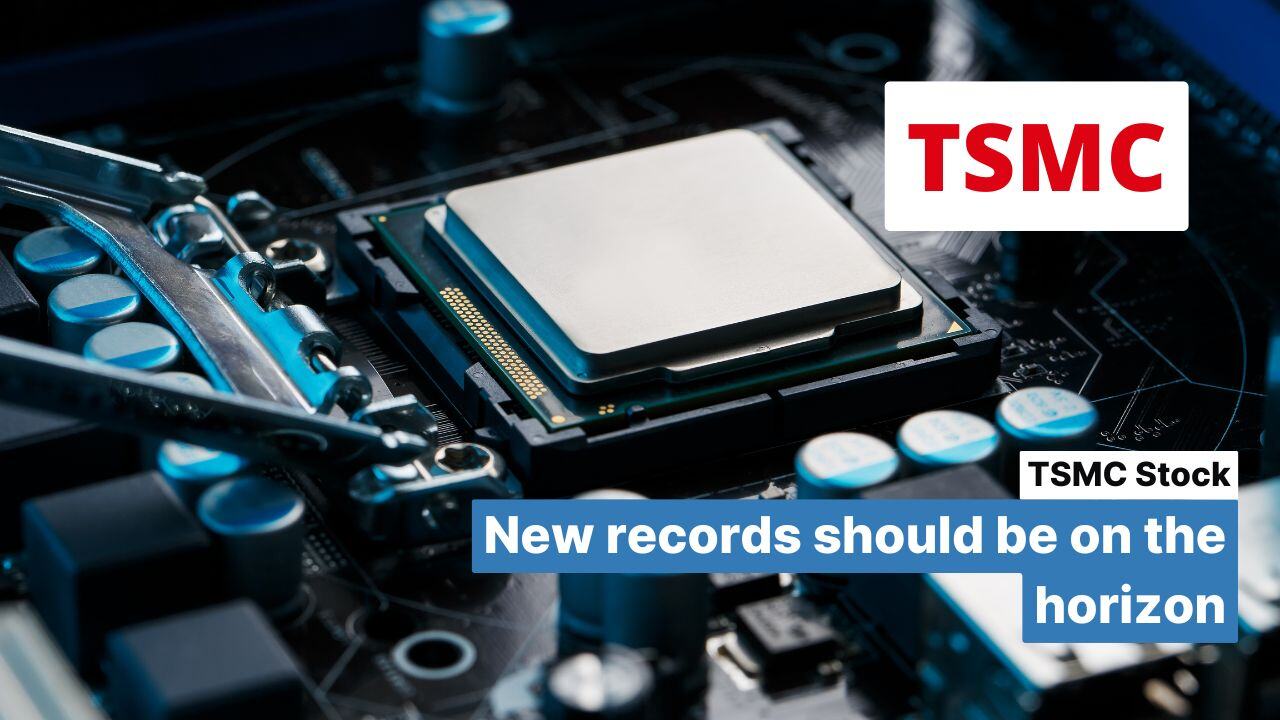Table of Contents
-
Company profile Arm Holding stock - leader in energy-efficient processor architectures
-
Key metrics of the Arm Holdings stock according to the HGI analysis
In today's world, it is quite possible that each of us has already used chip architectures from Arm Holdings (ISIN: US0420682058) without knowing it. Boring, but important, because they help save energy and make mobile communication possible for everyone. Whether in smartphones, tablets, smartwatches or in the infrastructure of the Internet of Things, Arm's processor architectures are embedded in billions of devices and shaping the digital world. A market share of over 50 per cent speaks for itself, as does our rapid growth. Investors are rewarding this, with share prices now at incredible levels. The share price has almost tripled since the IPO in 2023.
Source: StocksGuide
Rising capitalisation has become a tradition: the valuation has risen from $32 billion in 2016, when the British chip designer was acquired by Softbank, to almost $150 billion at last count. Not a bad deal for the Japanese, who still own almost 90% of the shares. Especially since a previous sale to Nvidia for US$40 billion failed.
As the undisputed leader in energy-efficient chip architectures, Arm is benefiting from major megatrends such as the proliferation of mobile devices, the spread of the Internet of Things and the growing importance of artificial intelligence. Despite the strong growth, the question is whether the current valuation of the stock is justified, as it asks a lot of investors. Given the cyclical nature of the market and the fact that Arm continues to be viewed as a strategic asset by Japan's SoftBank, the high valuation could mean a potential setback. The following stock analysis of Arm Holdings highlights the key points.
The key facts in a nutshell
- Arm is the undisputed leader in energy-efficient processor architectures.
- Numerous megatrends play into the chip architecture licensor's hands
- Growth is high, valuation is demanding for investors
- Given the cyclicality, perhaps too much for a company still seen as a pawn of Softbank
Company profile Arm Holding stock - leader in energy-efficient processor architectures
The story of Arm Holdings began in 1990 when the company was formed as a joint venture between Acorn Computers, Apple and VLSI Technology in Cambridge, England. Originally known as Advanced RISC Machines, Arm grew out of an Acorn project to develop a low-power processor for the first commercial RISC architecture home computer. These processors, based on Reduced Instruction Set Computing (RISC) architecture, were smaller and more power efficient than conventional processors and were particularly suited to mobile applications.
In the early 1990s, Arm initially licensed its architectures to other companies rather than producing its own chips, which later proved to be a key competitive advantage. The breakthrough came in the mid-1990s when Apple used the ARM6 processor in the Newton PDA, one of the first handheld devices on the market. During this time, Arm began to systematically expand its licensing model. As a result, more and more electronics manufacturers began to equip their mobile devices with Arm architectures.
With the boom in mobile phones and later smartphones in the 2000s, Arm became one of the most important players in the semiconductor industry. Arm's processors, whose performance has been continually optimised, have been widely adopted because they consume little power while delivering high computing power. Almost all major mobile phone manufacturers, including Nokia, Samsung and later Apple with the iPhone, now rely on Arm architectures. More than 300 billion Arm chips have been sold to date. 99 per cent of smartphones use them and around 70 per cent of the world's population accesses them every day, most without even knowing it.
The company's dominance has also attracted the interest of investors: in 2016, Arm Holdings was acquired by Japan's SoftBank for around $32 billion. This allowed Arm to expand its investments in new technologies such as the Internet of Things (IoT) and autonomous driving. It also allowed Arm to extend its dominance and enter new markets, such as servers and high-performance computing. In 2020, however, Softbank tried to sell Arm due to its own increasing financial burdens. Nvidia was then in the running to buy the British company for $40 billion. The idea was to enter a market dominated by Qualcomm. This would have allowed Nvidia to expand its business while also serving other megatrends.
But the deal did not go through. Ultimately, it fell through because of antitrust concerns. A critical aspect of the deal was access to Arm's vast partner network, which includes all the world's major technology companies. Instead, SoftBank decided to take Arm public in 2023 in what was hailed as one of the most important technology IPOs of the decade. Today, the semiconductor company is an industry heavyweight with a market capitalisation of $147 billion. The market cap has almost tripled since the IPO. The main beneficiary is still majority shareholder Softbank, which still holds 88 per cent of the shares.
Arm is the global leader in energy-efficient processor architectures and plays a central role in a wide range of markets, from smartphones and IoT devices to the automotive industry and data centres. Its business model is primarily based on developing and licensing microprocessor architectures that companies around the world integrate into their own chips. Arm derives its revenues from two main sources: licensing and royalties, i.e. payments for the use of intellectual property.
Source: Arm Holdings shareholder letter Q4/2023
In the licensing business (royalties and other revenue), Arm sells the right to use its processor architectures to other companies. These customers, usually chip or device manufacturers, gain access to Arm's chip designs through licensing and can adapt them to their own needs. Once licensed, customers pay a one-off royalty to Arm, which varies depending on whether it is a standard licence or an extended licence that allows them to make their own customisations.
In addition to licence fees, Arm also generates ongoing income through what is known as royalty income. This area is particularly profitable for Arm because it is a source of recurring revenue. Customers who manufacture and integrate licensed chips into end devices pay Arm a royalty for each device sold that is based on the Arm architecture. The amount of the royalty is usually volume-based: the more units sold, the higher the revenue for Arm. As Arm architectures are used in billions of devices worldwide, this model provides a stable, recurring revenue stream - a goldmine for investors, especially given the proliferation of mobile devices.
Overall, Arm combines a licensing model that provides up-front revenue through one-time fees with a royalty model that builds on the long-term success of its customers and provides ongoing profits over the lifecycle of their products.
The industry in detail
The semiconductor industry, of which Arm is a part - although it does not manufacture chips - is one of the most innovative and competitive in the global economy. It is the backbone of modern technology and touches almost every aspect of daily life, from consumer electronics, communications devices and vehicles to industrial applications and supercomputers. Understandably, the industry is characterised by dynamic growth and strong cycles, driven by demand for new technologies such as 5G, artificial intelligence, autonomous vehicles and the Internet of Things (IoT).
However, an important trend in the semiconductor industry is the increasing demand for energy-efficient and high-performance chips. This is being driven in particular by the proliferation of mobile devices and wearable technologies, where battery life and computing power are critical. Arm has established itself as a leading provider of energy-efficient processor architectures and is particularly strong in mobile processors. While traditional chipmakers such as Intel and AMD have long dominated the PC and server markets, Arm has revolutionised the mobile market with its RISC architectures and is now a major player in new segments such as automotive and data centres.
Competition and risks
However, Arm is no exception. It competes with several companies that either offer alternative chip architectures or develop their own chips and architectures. A major competitor is the open chip architecture RISC-V, which is increasingly seen as an alternative to the Arm architecture. As RISC-V is royalty-free and can be used by companies at no cost, it is particularly attractive to companies that develop their own chips and want to save costs. RISC-V is gaining momentum in Internet of Things (IoT) and data centre applications and is supported by a growing developer community.
Arm's competitors also include major chipmakers that have developed their own architectures and have strong market positions. Intel is a prominent example: the company has dominated the market for decades with its x86 processors, which are used primarily in PCs and servers. While Arm leads the market for mobile devices and IoT applications with its energy-efficient designs, Intel has a strong presence in PCs and data centres. However, Intel is increasingly trying to compete in mobile and IoT applications and is investing in new, more efficient architectures. Whether this will be successful remains to be seen, given the company's recent escapades and many other issues. However, Arm's market share is growing rapidly. It recently surpassed 50 per cent.
Source: Khaven Investments, Longportapp.com
Another major competitor is AMD, which also relies on x86 processors and competes with Arm in markets such as data centres, high-performance computing and PCs. AMD's EPYC server processors and Ryzen PC chips provide a strong alternative for customers requiring high performance computing. However, AMD has a less significant presence in mobile applications, meaning that it competes primarily with Arm in the server and PC segments.
Qualcomm is also a competitor of Arm, particularly in mobile devices and the Internet of Things. Qualcomm itself uses Arm architectures for its Snapdragon processors, but also develops its own designs for specialised applications. Its strength in mobile and interest in new markets such as laptops and data centres make Qualcomm a direct competitor to Arm, regularly releasing custom processors that optimise performance for specific markets.
Apple has developed its own family of chips based on Arm architectures, Apple Silicon, which it will use in its Mac range from 2020. This means that Apple is a licensee of Arm, but also a competitor, as it continues to develop the Arm architecture in its own way, optimising it for high performance. Apple Silicon has already set the standard with its innovations in energy-efficient and high-performance processors and is a strong competitor, especially in the PC sector.
Nvidia is also a serious competitor to Arm, having pursued its own plans for energy-efficient, high-performance processors in recent years. Nvidia is best known for its graphics processing units (GPUs), which are in high demand for AI applications and data centres. After its failed attempt to acquire Arm, Nvidia continues to focus on developing chips that combine both GPU and CPU capabilities and are optimised for applications such as AI and cloud computing. This puts Nvidia in direct competition with Arm in certain market segments.
Source: Arm Holdings peer group revenues, StocksGuide
Technological advances and the entry of new companies are making competition in the semiconductor industry increasingly dynamic. Technology companies such as Amazon and Google (Alphabet) are now developing their own custom chips for their specific needs. This means that Arm is challenged to defend its leading position through continuous innovation, especially in fast-growing segments such as data centers and edge computing.
The latest Arm Holdings Q2 figures from November 2024
Arm recently published its figures for the second quarter of 2025, ending 30 September 2024. Revenue growth in the second quarter was just 5%. Licensing was disappointing, down 15 per cent. However, management stressed that this was due to normal fluctuations related to the timing and size of several large licensing deals. However, management said that order intake in the second quarter was strong. The slightly larger Licensing business continued to grow strongly at 23 percent. In particular, the establishment of Armv9 and the recovery of the smartphone market in general contributed to this success.
Source: Arm financial data
Total revenues for the second quarter of 2025 were $844 million. Operating income was well into positive territory at $64 million, compared to a loss of $156 million in the same quarter last year. However, the operating margin was weak at 8 percent. On an adjusted basis, the operating margin of 39 percent was also well below the 48 percent of the previous year.
The picture was similar at the bottom line, where net income for the quarter was $107 million. And although the adjusted net profit was 378 million dollars, representing a net profit margin of almost 38 percent, the adjusted net profit for the quarter was also 16 percent lower.
Despite high gross royalty income, the company's success is heavily dependent on research and development costs. These costs alone amounted to more than $500 million last quarter - no chicken feed on revenues of $844 million! A reduction of $119 million in these costs was a major contributor to the improvement and to the bottom line. But savings in administration and distribution also added almost another $50 million to the bottom line.
Arm Holdings stock price outlook 2025
Regarding the outlook for the full year 2025, the outlook after the first two quarters is maintained. The expected full year revenue of $3.8 to $4.1 billion remains unchanged. Adjusted operating costs are expected to be around $2 billion. Adjusted earnings per share of $1.45 to $1.65 would represent a best-case increase of 30 percent over the 2024 figure of $1.27. The worst case would be an increase of just over 14%. The range for earnings is between 17.5% and 26.8%.
Source: Shareholder letter Q2-2024, Arm Holdings
Analysts also see the chip designer continuing to grow. With expected revenue growth of almost 4 billion euros, their estimates are at the upper end of Arm's forecasts. The net margin is expected to exceed 22 percent, a significant recovery from last year.
Source: Arm Holdings sales and margin forecasts for 2025, 2026 to 2029
In the long term, margins are expected to increase further. In 2029, for example, net margins of almost 40 percent are possible, according to analysts. Strong sales growth above the 20 percent mark will be accompanied by disproportionate profit growth. This is likely to be due to the high economies of scale that arise as the licensing business expands.
However, the current high cost level of around two billion US dollars remains problematic. On an unadjusted basis, they are significantly higher, partly due to share-based compensation.
Source: EPS and P/E forecasts for Arm Holdings stock to 2029
It remains interesting to look at the development of EPS, or earnings per share. Here too, analysts expect a disproportionate increase. Ideally, however, this will ensure that the utopian high valuation with a P/E ratio of almost 170 in 2025 will fall to just under 50 in 2029. There could be a big mismatch between risk and reward here.
Key metrics of the Arm Holdings stock according to the HGI analysis
The Arm share's HGI (High-Growth Investing analysis) score shows a mixed performance, revealing both strong and weak areas in the company's growth profile. The overall score of 10 out of a possible 18 points meets some of the criteria for High-Growth Investing. However, the company did not score highly in all areas.
Source: HGI score of Arm Holdings stock
Looking at the specific ratios, Arm has an impressive gross margin of 92%. This high gross margin is typical for companies with a licence-based business model. As the ongoing royalties have comparatively low variable costs, there is a high degree of scalability. Arm receives the maximum score of three points for this indicator.
The Rule of 40 indicator performs similarly well. It combines profitability and revenue growth by adding the free cash flow margin to revenue growth. In HGI's analysis of Arm Holdings' shares, this resulted in a value of over 41 percent, slightly above the benchmark of 40 percent. This tends to be a positive sign for profitable growth. Arm scores one out of three points here.
Arm also performs well in terms of revenue growth over the last 12 months (TTM). This is 25 percent, which gives Arm three points. This shows solid growth, but not in the top tier of the HGI score. A comparison of sales development in recent years also reveals fluctuations: while sales growth in 2022 was still 33 percent, it actually fell slightly to -0.9 percent in 2023, before stabilising at just over 20 percent in 2024. These fluctuating growth rates are indicative of cyclical changes in demand and specific market challenges.
Source: Arm Holdings financial statement data
Another strength is Arm's debt-to-equity ratio of just 0.04, the highest in the category. Arm Holdings is virtually debt-free and has a very solid financial structure that minimizes risks for investors and leaves room for strategic investments. For example, the equity ratio was almost 67% in the last quarter. At the same time, the company generates high free cash flow: almost USD 1 billion in the last fiscal year 2024.
Source: Free cash flow of Arm Holdings
However, valuation is a weak point. The ratio of enterprise value to sales (EV/sales) currently stands at 43x, which is considered very high. Arm receives no points here, which could indicate a possible overvaluation. However, growth potential must also be taken into account. Arm is developing products for a very important technological era. Energy-efficient chips are becoming increasingly important to meet the challenges of AI. This is also reflected in the PEG ratio, which scores two out of three points with a value of 1.5.
Overall, the HGI score of 10 points shows that Arm could be an attractive investment opportunity for growth-oriented investors, particularly due to its high margins, profitable growth and low debt. However, the high EV/sales valuation could also indicate that the stock is expensive relative to sales. This is unlikely to change much in the future. Growth is expected to be in the region of 20% over the next few years. Profits are expected to grow much faster, leading to potential margin expansion. With a bit of luck, the HGI could therefore remain stable if expectations are not disappointed.
Valuation of Arm Holdings stock
The valuation of Arm Holdings' shares is extremely high, with a P/E ratio of 244. However, even the expected P/E of 176 still shows a large premium for the chip designer's growth potential.
Source: Valuations of Arm Holdings stock
Even though growth has been explosive, the history of growth momentum shows that this is a cyclical stock. The sales multiple is also high at over 44. The same goes for the EV/sales ratio. Even a possible improvement in earnings over the years cannot explain the high price premium. A doubling of profitability and a continuation of strong growth are essential to justify the high valuation. However, what analysts expect for the future may not be enough to justify the valuation.
Arm offers a unique equity story thanks to its leadership in energy-efficient chip architectures that are used in billions of devices worldwide. The high valuation could be justified precisely because the company continues to benefit from megatrends such as the growth of mobile devices, the Internet of Things and artificial intelligence, which promise stable long-term revenue streams. In addition, Arm has a strong licensing model with extremely high margins. Extremely low debt and stable cash flows provide financial flexibility for future growth. It is also impressive that Arm is considered a market leader in key industries. Arm architectures are the future, with every second chip recently using one.
Conclusion on the Arm Holdings stock
Arm Holdings is the undisputed leader in energy-efficient processor architectures and is benefiting from several strong growth megatrends that put the company in an excellent long-term market position. The company already holds this position with a market share of over 50%.
The impressive revenue growth and high profitability through the licensing model make the stock attractive for investors. However, the extremely high valuation may be overdone given the cyclical nature of the market and the fact that ARM is still heavily influenced by SoftBank as a strategic asset. At the moment, you have to pay $150bn for $1bn of free cash flow. With expected growth of 'only' 20+% per annum, valuation risks could dominate.
Source: Analysts' views on Arm Holdings
Nevertheless, analysts tend to be optimistic, which is probably mainly due to the good growth figures; more than half of the analysts recommend buying, but the average price of $147 is very close to the current price, which limits the upside from this point of view.
If you would like to receive new investment ideas and free stock analyses selected according to the Levermann, High-Growth Investing or Dividend Strategy by email every week, you can now subscribe to our free StocksGuide newsletter.
The author and/or persons or companies associated with the StocksGuide own or may own shares in Arm Holdings. This article represents an expression of opinion and not investment advice. Please note the legal information.




